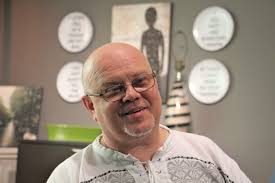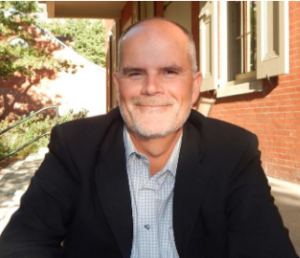The new normal means centering mental health to recover
 June 8, 2021
Category: Featured, Long, Purpose
June 8, 2021
Category: Featured, Long, Purpose
Our wellbeing is coming undone.
For almost a year, according to the KFF Health Tracking Poll, adults have reported increased difficulty sleeping and eating, increased consumption of alcohol or substances, as well as worsening chronic conditions because of coronavirus-related stress and worry.
In December 2020, over 40% of people surveyed that they were more anxious or depressed, up 200% from the year before — a rate, so high, some contend that should be sounding alarm bells.
Even the 2021 World Happiness Report said that global mental health has taken a sharp downturn: “As the pandemic struck, there was a large and immediate decline in mental health in many countries worldwide.”
As the number of daily new coronavirus cases continue to fall and economies are set to open, our mental health is far from recovered, but it was to be expected. Disasters bring with them extensive grief, loss and stress and that brings significant mental health burden.
It is common for the populace to suffer deteriorating mental health — as evidenced by an uptick in such indicators as substance use, domestic violence, and suicide attempts — long after the actual disaster.
A month after Hurricane Ike struck, for example, 5% of the population met the requirements for having a major depressive disorder. One out of 10 New York adults showed signs of major depressive disorder in the month after the 9/11 attacks and almost 25% reported increased alcohol use. The Deepwater Horizon oil spill also left the impacted communities with higher levels of clinical depression and anxiety.
COVID-19 has been no exception.
Almost 33 million people have suffered from COVID and 594,000 million Americans have died, meaning an unprecedented number of people throughout the country are grieving. A month after the economic shutdown last year, the unemployment rate soared to an unprecedented 14.8%, a rate unseen since the government started collecting data in 1948. In April 2021, unemployment was still higher (6.1%) than it had been pre-pandemic.
Yet the various solutions to the virus caused their own problems.
To decrease transmission risk, the remedy of social distancing caused isolation.
“One of the challenges from a harm-reduction perspective during the past 15 months has been the conflict in messaging to our participants,” said Prevention Point Executive Director José Benitez. “For example, during COVID, we had to instruct people to be distant from others for their safety, as opposed to harm reduction messages, which suggest that people not use drugs alone, so that someone can help in case of an overdose.”
The economic shut down caused financial burdens that increased anxiety. According to one study, suicides increase by one percent for every one percent increase in unemployment. “It is also really important to provide increased social services in high-risk areas such as Kensington and other high risk zip codes across the city,” Benitez said.
To fully recover will require an alleviation of the mental health burden that has been particularly carried by frontline workers, the elderly, those experiencing homelessness, as well as those with substance abuse issues and pre-existing mental illness.
Add to that list, those who have suffered from the most serious bouts of COVID. Researchers are cautioning that a high number of COVID sufferers may suffer from Post Intensive Care Syndrome (PICS) which will require intervention, including mental health support, to help them manage the anxiety and depression that can come with an ICU stay.
While youth generally escaped the physical havoc of COVID infections, they too are not flourishing. PolicyLab at CHOP called the youth mental health problem a crisis: “While youth seem to be at relatively limited physical health risk from COVID-19, the broad societal impacts of this pandemic, and the isolation caused by its associated shelter-in-place activities, have created a crisis for child and adolescent mental health.”
The School District of Philadelphia reported that calls to its crisis mental health hotline, which is staffed by the Uplift Center for Grieving Children, are getting longer as the toll from the pandemic, gun violence and racial trauma mount.
COVID may have erased Philadelphia’s opioid crisis from the front pages but not from reality. A recent national study found emergency room visits for opioid overdose were up 28.8% from 2019. The Inquirer recently reported that overdoses killed 1,214 Philadelphians in 2020, marking the city’s second-highest drug death toll on record, and one likely worsened by COVID-19 social distancing demands.
Those with pre-existing mental health and substance-use disorders are at not only at increased risk of getting infected but of the negative psychological impact of the pandemic. “As demonstrated by the number of overdoses we have seen in the City of Philadelphia over the past 14 months, there has been an increase in opioid use, as well as an increase in the number of people accessing all of Prevention Point’s programs from medical services to free meals to mail services,” said Benitez.
He added, “At Prevention Point, we believe that there should be a reduction in barriers to opioid use disorder treatment access as well as increased access to mental health services.”
In recent guest columns for Generocity, Scattergood Foundation President Joe Pyle said that “addressing the behavioral health needs of all Philadelphians will require robust, cross-sector interventions across a spectrum of health promotion, prevention and early intervention, treatment, and maintenance” and listed what the city needed to fund with its American Rescue Plan Act money in order to improve the behavioral health of the city.
“The mental health and substance use impacts of COVID-19 have been crushing. Between the grief associated with the public health crisis itself, increased unemployment, food and housing insecurity, social isolation, and juggling work and childcare responsibilities, it’s no wonder that almost 8 in 10 adults say that the pandemic is a significant source of stress in their life. Such stressors can lead to increased mental health disorders,” Pyle wrote.
An example of one of Pyle’s recommendations is a collaboration between the mental health community and the arts community with arts and culture as a means of healing.
That is happening.
Mural Arts Philadelphia and the City of Philadelphia Department of Behavioral Health and Intellectual disAbility Services (DBHIDS), in collaboration with the Porch Light Program were seeking to partner with Black artists with Black mental health clinicians to create a public artwork on the topic of mental health and racism.
The artist-mental health clinician team will be expected to design and lead public conversations and art activities, which will culminate in a work of permanent or temporary public art. The deadline was last week and winners will be announced soon.
Find more of Pyle’s recommendations for addressing behavioral and mental health concerns here and here.
Project
Porch Light ProgramTrending News











